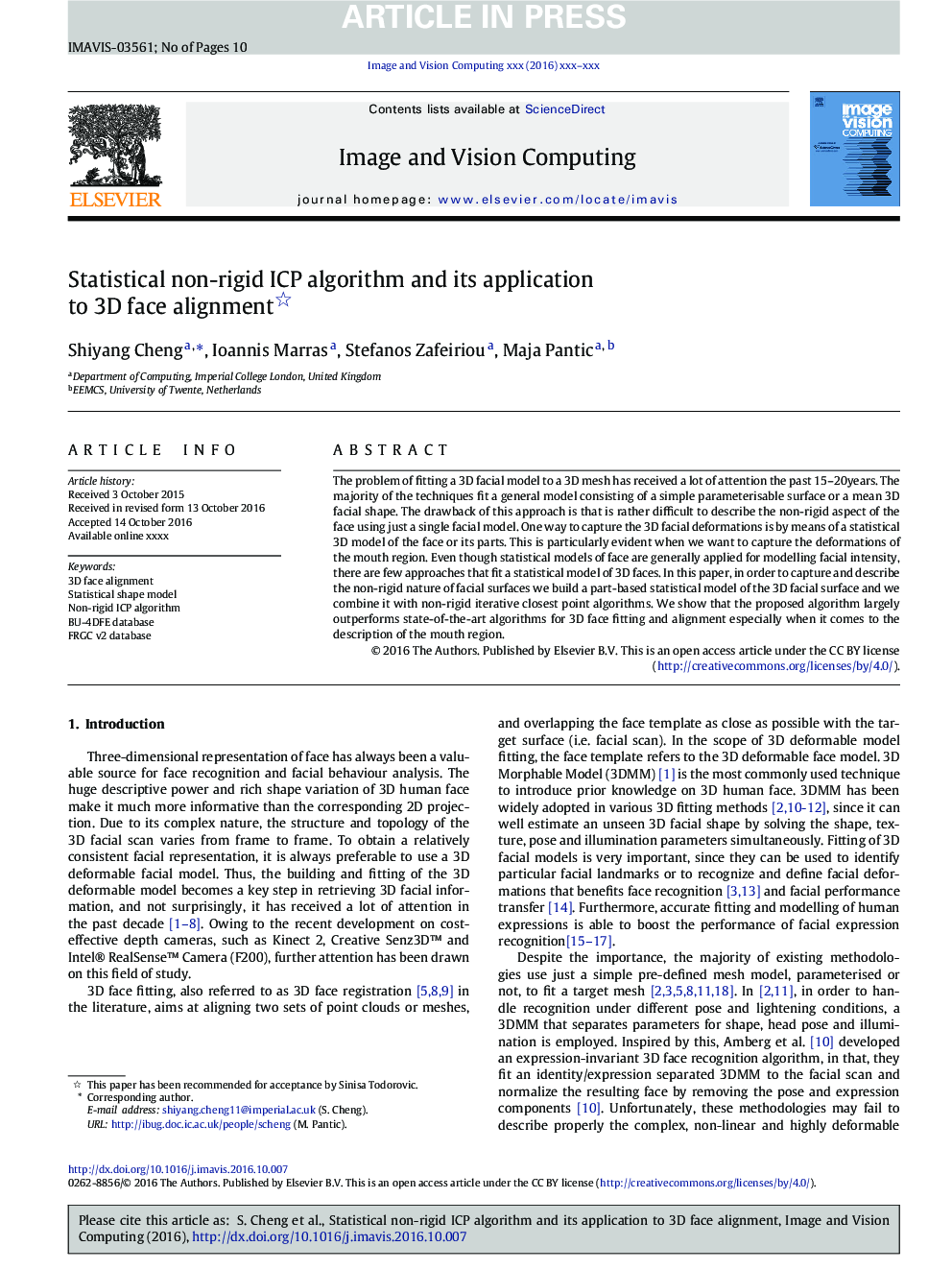| Article ID | Journal | Published Year | Pages | File Type |
|---|---|---|---|---|
| 4969028 | Image and Vision Computing | 2017 | 10 Pages |
Abstract
The problem of fitting a 3D facial model to a 3D mesh has received a lot of attention the past 15-20years. The majority of the techniques fit a general model consisting of a simple parameterisable surface or a mean 3D facial shape. The drawback of this approach is that is rather difficult to describe the non-rigid aspect of the face using just a single facial model. One way to capture the 3D facial deformations is by means of a statistical 3D model of the face or its parts. This is particularly evident when we want to capture the deformations of the mouth region. Even though statistical models of face are generally applied for modelling facial intensity, there are few approaches that fit a statistical model of 3D faces. In this paper, in order to capture and describe the non-rigid nature of facial surfaces we build a part-based statistical model of the 3D facial surface and we combine it with non-rigid iterative closest point algorithms. We show that the proposed algorithm largely outperforms state-of-the-art algorithms for 3D face fitting and alignment especially when it comes to the description of the mouth region.
Keywords
Related Topics
Physical Sciences and Engineering
Computer Science
Computer Vision and Pattern Recognition
Authors
Shiyang Cheng, Ioannis Marras, Stefanos Zafeiriou, Maja Pantic,
